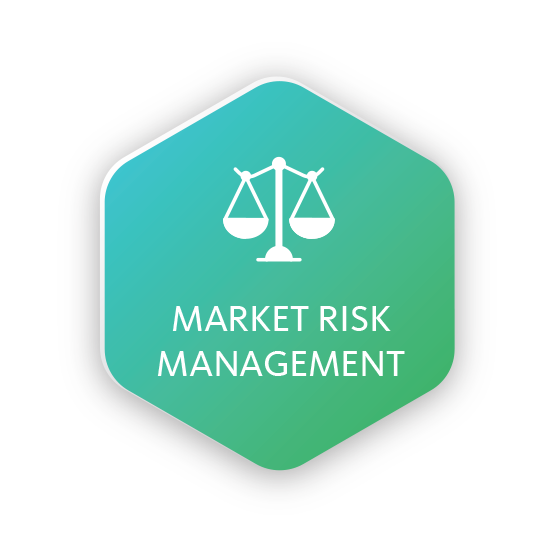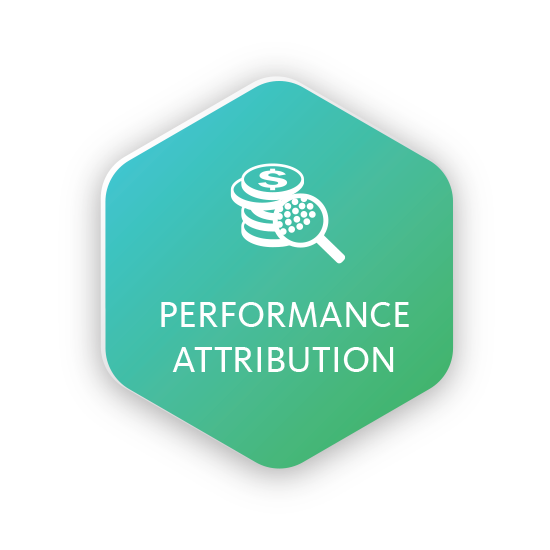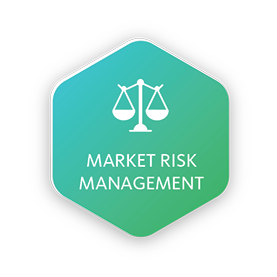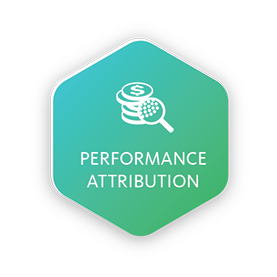Market Risk Management
Manage market risk levels
Market Risk enables you to explicitly include risk (client defined measure) into asset allocation decision making process. In order to calculate standard risk measures, such as VaR and CVaR, you can choose from a variety of methods, define your own assumptions (such as normal or non-normal return distributions), and set input parameters (such as the decay factor for EWMA/GARCH calculations). You can segment market risk according to type: Equity, FX and IR risk.
Ensure compliance with regulatory requirements
Automated procedure is the most efficient way to ensure regulatory compliance, and you will be able to do exactly that with our Market Risk module. Considering we have 5 different models (parametric, historical, Monte Carlo, BRW, Hull&White), two cash-flow mapping concepts (preservation of IR sensitivity or present value properties), and user defined calculation parameters, you can easily meet regulatory demands, and/or create your own tailor-made procedures.

Limit Management
Configure your legal and investment limits
Limit system enables you to easily configure, control and update all of your legal and investment limits. By using our authorization level functionality, you can set different authorization requirements for different limit breaches, thus minimizing operational risk.
Define your specific internal limits and build your own limit structure
In addition to legal and investment limits, you can easily build specific internal limits, by using our limit builder functionality and simply choosing from various parameters and operators, in order to create mathematical formulae for each limit. Once all three limit categories are up-and-running, in combination with our pre and post limit checks, you have a complete limit management system for monitoring and controlling all operational phases of the investment decision making process.

What If & Stress Test
Simulate market movements and analyze the impact on your portfolios
What If & Stress Test enables you to change the underlying factors that define instrument valuations, and consequently measure and analyze the effects. You can simulate benchmark movements and shocks, yield curve linear and non-linear shifts, zero-spread movements, and FX rates oscillations. The impact on your portfolio can be assessed globally, or by segmenting your portfolio based on asset class/region/sector/currency/etc. classification.
Simulate buy/sell orders and analyze the impact on your portfolios
Before placing orders, whether the reason is complete rebalancing, or simply adding a couple of new instruments, you can simulate the effect that the executions will have on your portfolio. Along with cash availability projections and pre-trade limit checks, analyze the impact on your portfolio structure, based on asset class/region/sector/currency/etc. classification, as well as the impact on key quantitative and risk parameters.

Performance Attribution
Manage your portfolio’s return by managing contributing factors
Performance attribution module also includes contribution analysis, enabling you to define and measure contributing factors of your portfolio’s return, from price, interest and FX rate changes, to expenses, fees and trading. Group them by your own accord: asset class, fees, region, sector, FX denomination, etc. Trading can be segmented into buy and hold (price difference for the starting position), market timing (aggregate value of additional buying and selling within the observed period) and trading floor (aggregate value of end-of-day and buy/sell price differences on daily basis) contributions.
Understand the reasons behind under/over-performance vs the benchmark
After quantitative analysis of your performance vs the benchmark, our module enables you to perform qualitative analysis – performance attribution – defining, measuring and understanding the reasons behind under/over-performance vs the benchmark. Segmenting relative return into allocation effect (portfolio vs benchmark position weight difference impact), selection effect (portfolio vs benchmark position return difference impact), and interaction effect (remaining amount of relative return), you will gain valuable insight.
Detect your decision making weaknesses and strengths
By alternating between methods, extracting FX exposure effects, top-down/bottom-up approaches and grouping methods, you can measure the effects of your investment making decisions. Monitor the performance of your trading desk, stock selection decisions, macro/micro allocation decisions, and manage them accordingly.





